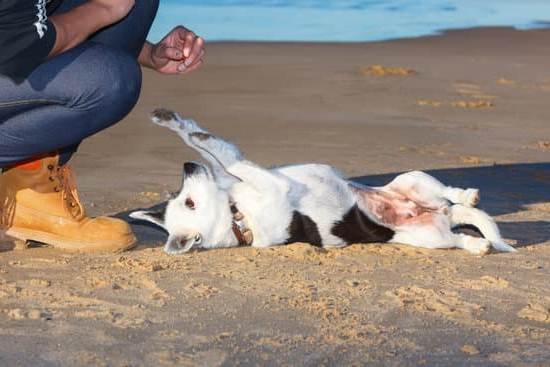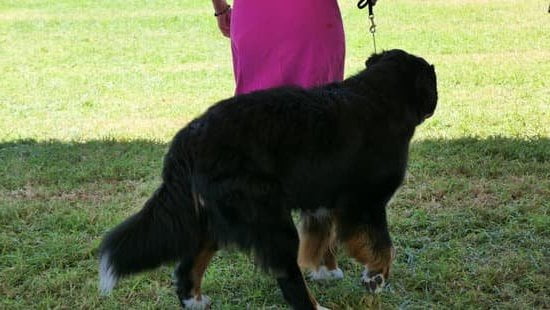Hunting Dog Training is essential for ensuring a successful and enjoyable hunting experience with your canine companion. Whether you are an experienced hunter or new to the sport, it is crucial to understand the importance of proper training for your hunting dog. From choosing the right breed to mastering advanced techniques, training plays a key role in developing the skills and instincts necessary for a successful hunt.
When it comes to hunting dog training, there are several factors to consider, including choosing the right breed that suits your hunting style and environment. Basic obedience training is also essential, as it forms the foundation for more advanced skills such as retrieving, tracking, and pointing. Additionally, overcoming gun shyness and utilizing scent training are crucial aspects of preparing your hunting dog for the field.
In this article, we will explore the various aspects of hunting dog training, from basic obedience commands to specialized field training. By understanding and implementing these training techniques, you can build a strong bond with your canine partner and experience the rewards of a well-trained hunting dog in action. Let’s delve into the world of hunting dog training and uncover the keys to successful hunts with man’s best friend by our side.
Choosing the Right Hunting Dog Breed
When it comes to hunting dog training, choosing the right breed is a crucial decision that can greatly impact the success of your training efforts. Factors such as size, temperament, and natural abilities should all be taken into consideration when selecting a hunting dog breed.
Temperament and Energy Level
Different hunting dog breeds have varying temperaments and energy levels, so it’s important to choose a breed that matches your hunting style and personality. For example, if you prefer a more independent hunting partner, a breed like the English Setter may be suitable. On the other hand, if you’re looking for a high-energy and eager-to-please companion, breeds like the Labrador Retriever or the German Shorthaired Pointer may be better options.
Natural Abilities
Each hunting dog breed has its own unique natural abilities that make them well-suited for specific types of hunting. For example, breeds like the Bloodhound are known for their exceptional tracking skills, while pointers such as the German Shorthaired Pointer excel at locating and pointing game birds. Understanding the specific skills and instincts of different breeds can help you determine which one would be best for your preferred type of hunting.
Size and Physical Characteristics
The size and physical characteristics of a hunting dog breed should also be taken into account when making your selection. Larger breeds like the Golden Retriever or the Chesapeake Bay Retriever may be better suited for retrieving waterfowl, while smaller breeds like Beagles are ideal for rabbit hunting due to their compact size and agility. Consider the type of game you’ll be pursuing and select a breed that is well-matched in terms of size and physical traits.
Basic Obedience Training for Hunting Dogs
When it comes to hunting dog training, basic obedience is the foundation for all other specialized skills. Teaching your hunting dog to sit, stay, and come on command is essential for their safety, as well as for successful hunts. Here are some tips and techniques to effectively train your hunting dog in basic obedience:
1. Start Early: Begin training your hunting dog in basic obedience commands as soon as you bring them home. Younger dogs are more receptive to learning and can quickly pick up on these fundamental skills.
2. Use Positive Reinforcement: Reward-based training is highly effective for hunting dogs. Use treats, praise, and affection to reinforce good behavior when they obey commands such as sit, stay, and come.
3. Consistency is Key: Consistently using the same verbal cues and hand signals will help your hunting dog understand what is expected of them. Practice these commands daily in different environments to generalize their obedience.
Training a hunting dog in basic obedience commands like sit, stay, and come not only ensures their safety during hunts but also lays the groundwork for more advanced skills such as retrieving and pointing. By investing time and effort into basic obedience training, you’ll be setting your hunting dog up for success in the field while strengthening the bond between you and your canine partner.
Advanced Hunting Dog Training Techniques
Retrieving Command
One of the most important skills a hunting dog needs to learn is retrieving. This skill involves the dog locating and returning game that has been shot by the hunter. To train your dog in retrieving, start by teaching them to “fetch” with a dummy or toy.
Once they have mastered this, move on to training them to retrieve in different environments and with various distractions. Practice this skill regularly to keep your hunting dog sharp and efficient in the field.
Tracking Skills
Training your hunting dog to effectively track game is crucial for a successful hunt. Begin by developing their natural tracking instincts through scent detection exercises. As they progress, introduce them to specific scents of different game animals so they can differentiate between them while on the trail. It’s important to be patient and consistent when training your hunting dog for tracking, as it can take time for them to become proficient in this skill.
Pointing Behavior
Certain breeds of hunting dogs are known for their ability to point at game, signaling its location to the hunter without startling or chasing it away. Training your dog on how to properly point involves reinforcing their natural instinct through consistent practice and positive reinforcement. Use visual cues such as flags or bird wings on strings to help them understand when and where they should be pointing.
By focusing on these advanced techniques for hunting dog training, you can equip your canine companion with the necessary skills to become an invaluable asset during any hunting expedition. Whether you are aiming for waterfowl, upland birds, or big game, a well-trained hunting dog will enhance the experience and increase the success of your hunts.
Gun Shy Training for Hunting Dogs
Gun shy training is an essential part of hunting dog training, as it helps to ensure that your canine companion remains calm and focused in the presence of firearms. This type of training is especially important for hunting dogs, as they are often exposed to the sound of gunshots during hunting trips. It’s crucial to desensitize your dog to the noise and build a positive association with it, so they can perform their duties without fear or anxiety.
One effective method for gun shy training is to gradually introduce your hunting dog to the sound of gunfire in a controlled environment. Start by playing recordings of gunshots at a low volume while engaging in activities that your dog enjoys, such as playing fetch or receiving treats. Over time, gradually increase the volume of the recordings while continuing to make these activities enjoyable for your dog. This will help them associate the sound of gunfire with positive experiences.
It’s also important to remain patient and consistent during gun shy training for hunting dogs. Every dog will have a different reaction to loud noises, so it’s essential to take things at their own pace.
Rushing the process can lead to heightened fear and anxiety, ultimately hindering your dog’s ability to perform well during hunts. By being patient and consistent, you can help your hunting dog build confidence and overcome their fear of firearms in a gradual and positive manner.
| Training Method | Description |
|---|---|
| Gradual Exposure | Introduce gunshots at a low volume while engaging in enjoyable activities |
| Patience and Consistency | Be patient with your dog’s progress and consistently work on desensitizing them to gunfire |
Utilizing Scent Training for Hunting Dogs
Scent training is a crucial aspect of hunting dog training, as it taps into the natural instincts of the canine to track and locate prey. Whether you have a hound, retriever, or spaniel, enhancing your dog’s ability to use their sense of smell effectively can significantly improve their performance in the field. Scent training involves teaching your hunting dog to recognize and follow specific scents associated with the game you are hunting, such as deer, birds, or small game.
One effective method for scent training is using scented training aids or dummies that mimic the smell of the target game. By introducing these scents during basic obedience and retrieval training, your hunting dog will learn to associate specific smells with the act of finding and retrieving prey. Additionally, incorporating games and exercises that encourage your dog to rely on their sense of smell can further enhance their natural instincts for tracking and locating game.
An important consideration when implementing scent training for hunting dogs is to start with familiar scents before progressing to more complex ones. This gradual approach allows your canine companion to build confidence in their ability to identify and follow different scents in various environments. With consistent and patient scent training, your hunting dog can become more proficient at using their sense of smell to lead you to the game, ultimately improving your overall hunting experience.
| Scent Training Method | Effectiveness |
|---|---|
| Use of scented training aids or dummies | Enhances association between specific smells and prey |
| Incorporating scent-based games and exercises | Strengthens reliance on sense of smell for tracking |
| Gradually introducing new scents in familiar environments | Builds confidence in identifying different smells |
Field Training for Hunting Dogs
Field training is a crucial aspect of hunting dog training, as it provides the opportunity for dogs to apply their skills in realistic hunting scenarios. By practicing in actual hunting environments, dogs can familiarize themselves with the sights, sounds, and smells they will encounter during a hunt. This type of training also allows them to hone their natural instincts and learn how to navigate various terrains while remaining focused on the task at hand.
During field training for hunting dogs, it’s essential to introduce them to different types of terrain such as forests, fields, and wetlands. This exposure helps them become accustomed to the environment they will be working in when accompanying their owners on hunts. Additionally, field training provides an opportunity for dogs to practice obedience commands in a real-world setting, where distractions are abundant.
To make the most of field training sessions, hunters can utilize various techniques such as using decoys or scents to simulate hunting scenarios. This hands-on approach can help hunting dogs learn how to track and locate game effectively.
Moreover, incorporating mock hunts into field training can help prepare dogs for the excitement and unpredictability of actual hunting trips. By consistently exposing them to these experiences, hunters can build their dog’s confidence and enhance their overall performance in the field.
- Introduce hunting dogs to different terrains
- Practice obedience commands in real-world settings
- Utilize decoys and scents to simulate hunting scenarios
- Incorporate mock hunts into field training sessions
By incorporating field training into their regimen, handlers can ensure that hunting dogs are well-prepared for the challenges they will face in actual hunting situations. Through consistent practice in diverse environments and simulated hunting scenarios, dogs can develop the skills and confidence needed to become valuable partners in the pursuit of game.
Training for Specific Game
Training hunting dogs for specific game involves tailoring their training to the specific behaviors and instincts required to track and retrieve different types of prey. Whether it’s waterfowl, upland birds, or big game, understanding the unique characteristics of the prey will help in customizing the training program for your hunting dog.
For waterfowl hunting, training should focus on teaching the dog to retrieve downed birds from water, as well as honing their swimming abilities. This may involve introducing them to bodies of water and gradually increasing the distance of retrieves. Additionally, introducing decoys and simulating realistic hunting scenarios can help them become familiar with the sights and sounds associated with waterfowl hunting.
Upland bird hunting requires a different approach, as dogs need to be trained to locate and flush out birds from their cover. Training should focus on developing their scenting abilities and teaching them to hold a point until given the command to flush. Incorporating field training exercises in varying terrains will help prepare them for real-world hunting conditions. Additionally, gun shy training is crucial for upland bird hunting, as dogs need to remain composed in close proximity to gunfire.
When it comes to big game hunting, dogs are typically used for tracking wounded animals. Training involves honing their tracking skills through scent work and teaching them appropriate behavior when they locate an injured animal. It’s important to tailor the training methods based on the specific game being pursued, whether it’s deer, bear, or other large mammals.
Training for specific game not only enhances the hunting dog’s performance but also ensures a more successful and ethical hunt. By understanding the unique requirements of each type of prey, hunters can best prepare their canine companions for a successful outing in the field.
The Role of Consistency and Patience in Hunting Dog Training
When it comes to hunting dog training, consistency and patience are key elements in building a strong bond with your canine partner. Training a hunting dog requires time, effort, and dedication, but the rewards of having a well-trained companion in the field are immeasurable. In order to develop a successful hunting dog, it is important to understand the role that consistency and patience play in the training process.
Consistency in training is essential for hunting dogs to understand what is expected of them. This means using the same commands, signals, and techniques consistently throughout the training process. By maintaining a consistent approach, hunting dogs are better able to understand what is being asked of them and are more likely to respond appropriately. Consistency also helps to prevent confusion and creates a clear understanding between the handler and the dog.
Patience is equally important when it comes to hunting dog training. Each dog learns at its own pace, so it’s important for handlers to be patient and understanding throughout the process. It’s natural for dogs to make mistakes during training, so remaining patient while offering guidance and positive reinforcement is crucial for their development. By being patient with your hunting dog, you can build trust and create a positive training environment that encourages learning and growth.
The bond between a hunter and their dog is built on mutual trust, respect, and understanding. Consistent training methods and patient guidance help foster this bond by creating a strong sense of teamwork between handler and canine partner. By remaining consistent and patient throughout the training process, hunters can establish a solid foundation for success in the field with their well-trained hunting companion.
Conclusion
In conclusion, proper hunting dog training is essential for any owner who wants to enjoy a successful and fulfilling hunting experience. By choosing the right hunting dog breed and providing basic obedience training, advanced techniques, and specific game training, owners can ensure that their four-legged companions are prepared for the challenges of the hunt. The role of consistency and patience cannot be overstated, as building a strong bond with your hunting dog is crucial for success in the field.
The rewards of a well-trained hunting dog are immeasurable. Not only does a well-trained dog enhance the hunting experience by retrieving, tracking, and pointing game, but they also provide companionship and loyalty throughout the entire process. The joy of the hunt is amplified when shared with a skilled and reliable canine partner who has been trained to work harmoniously with their owner.
Ultimately, the time and effort put into hunting dog training pays off in the form of a rewarding and dynamic relationship between owner and dog. The bond that develops through training creates a level of trust and understanding that is truly special. So whether it’s navigating challenging terrain or successfully flushing out game, a well-trained hunting dog will make any hunting expedition more enjoyable and ultimately more successful.

Welcome to the blog! I am a professional dog trainer and have been working with dogs for many years. In this blog, I will be discussing various topics related to dog training, including tips, tricks, and advice. I hope you find this information helpful and informative. Thanks for reading!





